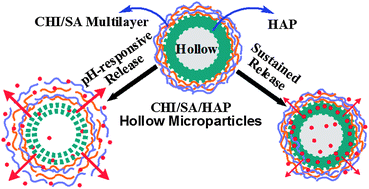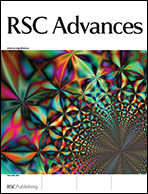Hollow hybrid hydroxyapatite microparticles with sustained and pH-responsive drug delivery properties
Abstract
The hybrid hydroxyapatite (HAP) hollow microparticles were achieved by combining HAP hollow microparticles and chitosan/sodium alginate (CHI/SA) multilayers via the layer-by-layer (LbL) self-assembly technique. Doxorubicin hydrochloride (DOX) loading and release investigation indicated that the prepared hybrid CHI/SA/HAP hollow microparticles with a hollow hydroxyapatite core and polymer multilayer shell exhibited high drug loading efficiency, sustained and pH-dependent drug release properties. The drug loading efficiency of CHI/SA/HAP hollow microparticles was 90.0%, which was much higher than that of solid HAP microparticles (39.6%). Compared to the solid HAP microparticles having a higher amount of released DOX over the initial 1 h (about 44.4% of total released drug over 24 h), CHI/SA/HAP hollow microparticles displayed sustained release properties with the value of only 28.4% with the same treatment. Moreover, the drug release of hybrid CHI/SA/HAP hollow microparticles was pH-dependent because of the different electrostatic interaction in the CHI/SA multilayers at different pH values and the dissolution of HAP hollow core under acidic conditions. The results indicate that the hybrid CHI/SA/HAP hollow microparticles show great potential as a novel drug carrier for controllable drug delivery.


 Please wait while we load your content...
Please wait while we load your content...